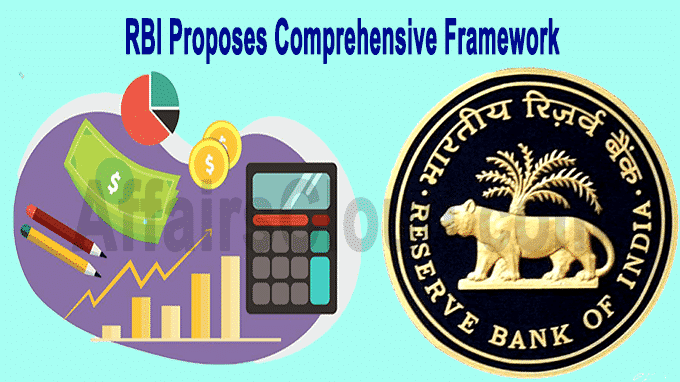 On June 8, 2020, after exercising the powers conferred by the Banking Regulation Act, 1949 and the Reserve Bank of India (RBI) Act, 1934, RBI has proposed two draft documents titled “Draft Comprehensive Framework for Sale of Loan Exposures” and “Draft Framework for Securitisation of Standard Assets” consisting of guidelines applicable to all Scheduled Commercial Banks (excluding Regional Rural Banks); All India Financial Institutions [National Bank for Agriculture and Rural Development (NABARD), National Housing Bank (NHB), EXIM (Export-Import) Bank, and Small industrial Development Bank of India (SIDBI)]; and, all Non-Banking Financial Companies (NBFCs) including Housing Finance Companies (HFCs).
On June 8, 2020, after exercising the powers conferred by the Banking Regulation Act, 1949 and the Reserve Bank of India (RBI) Act, 1934, RBI has proposed two draft documents titled “Draft Comprehensive Framework for Sale of Loan Exposures” and “Draft Framework for Securitisation of Standard Assets” consisting of guidelines applicable to all Scheduled Commercial Banks (excluding Regional Rural Banks); All India Financial Institutions [National Bank for Agriculture and Rural Development (NABARD), National Housing Bank (NHB), EXIM (Export-Import) Bank, and Small industrial Development Bank of India (SIDBI)]; and, all Non-Banking Financial Companies (NBFCs) including Housing Finance Companies (HFCs).
- The revised guidelines include the recommendations of the Committee on Development of Housing Finance Securitisation Market in India chaire by Dr. Harsh Vardhan and the Task Force on the Development of Secondary Market for Corporate Loans chaired by Thothala Narayanaswamy Manoharan, which were set up by the Reserve Bank in May, 2019.
- The stakeholders can send their comments on the draft framework by June 30, 2020.
Comprehensive framework for sale of loans/Reserve Bank of India (Sale of Loans) Directions, 2020.
The draft guideline proposed by the RBI for sale of loan exposures deals with various issues like asset classification of the loan to be transferred, nature of entity purchasing loan and mode of transfer of loans. The move is aimed at building a robust secondary market for bank loans that could ensure proper price discovery. The directions will be applicable to all loan sales, including sale of loans to special purpose entities for the purpose of securitization. The directions are:
- Sale of standard assets may be by assignment, novation or a loan participation contract (either funded participation or risk participation) whereas the sale of stressed assets may be by assignment or novation.
- Direct assignment transactions shall be subsumed as a special case of these guidelines.
- Requirement of MRR for sale of loans has been done away with.
- The price discovery process has been deregulated to be as per the lenders’ policy.
- Stressed assets may be sold to any entity that is permitted to take on loan exposures by its statutory or regulatory framework.
- Some of the existing conditions for sale of NPAs have been rationalised.
RBI proposes major changes in securitisation norms/Reserve Bank of India (Securitisation of Standard Assets) Directions, 2020
The central bank has also proposed significant changes in securitisation norms which are aimed at development of a strong and robust market. The revision in guidelines is an attempt to align the regulatory framework with the Basel guidelines on securitisation that have come into force effective January 1, 2018. The salient features of the draft securitisation guidelines as compared to the existing guidelines are as follows:
- Only transactions that result in multiple tranches of securities being issued reflecting different credit risks will be treated as securitisation transactions, and accordingly covered under these guidelines;
- In line with the Basel III guidelines, two capital measurement approaches have been proposed: Securitisation External Ratings Based Approach (SEC-ERBA) and Securitisation Standardised Approach (SEC-SA).
- A special case of securitisation, called Simple, Transparent and Comparable (STC) securitisations, has been prescribed with clearly defined criteria and preferential capital treatment.
- The definition of securitisation has been modified to allow single asset securitisations. Securitisation of exposures purchased from other lenders has been allowed.
- Carve outs have been provided for Residential Mortgage Backed Securities (RMBS) in prescriptions regarding minimum holding period (MHP), minimum retention requirements (MRR) and reset of credit enhancements.
- For underlying loans with original maturity of 24 months or less, the MRR shall be 5% of the book value of the loans being securitised.
- For underlying loans with original maturity of more than 24 months the MRR shall be 10% of the book value of the loans being securitised.
- RBI also retained the MHP for RMBS which are issued by the special purpose entity, at six months or period covering six instalments whichever is later. The minimum holding period is the duration for which a bank or NBFC is required to hold the loans on its book before selling them.
- A quantitative test for significant transfer of credit risk has been prescribed for derecognition for the purpose of capital requirements, independent of the accounting derecognition.
Click Here for Official Draft Comprehensive Framework for Sale of loan exposures
Click Here for Official Draft Framework for Securitisation of Standard Assets
About Reserve Bank of India (RBI):
Headquarters– Mumbai, Maharashtra
Formation– 1 April 1935
Governor– Shaktikanta Das
Deputy Governors– 4 (Bibhu Prasad Kanungo, Mahesh Kumar Jain, Michael Debabrata Patra, one is yet to be appointed).



